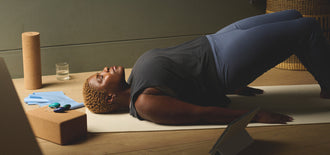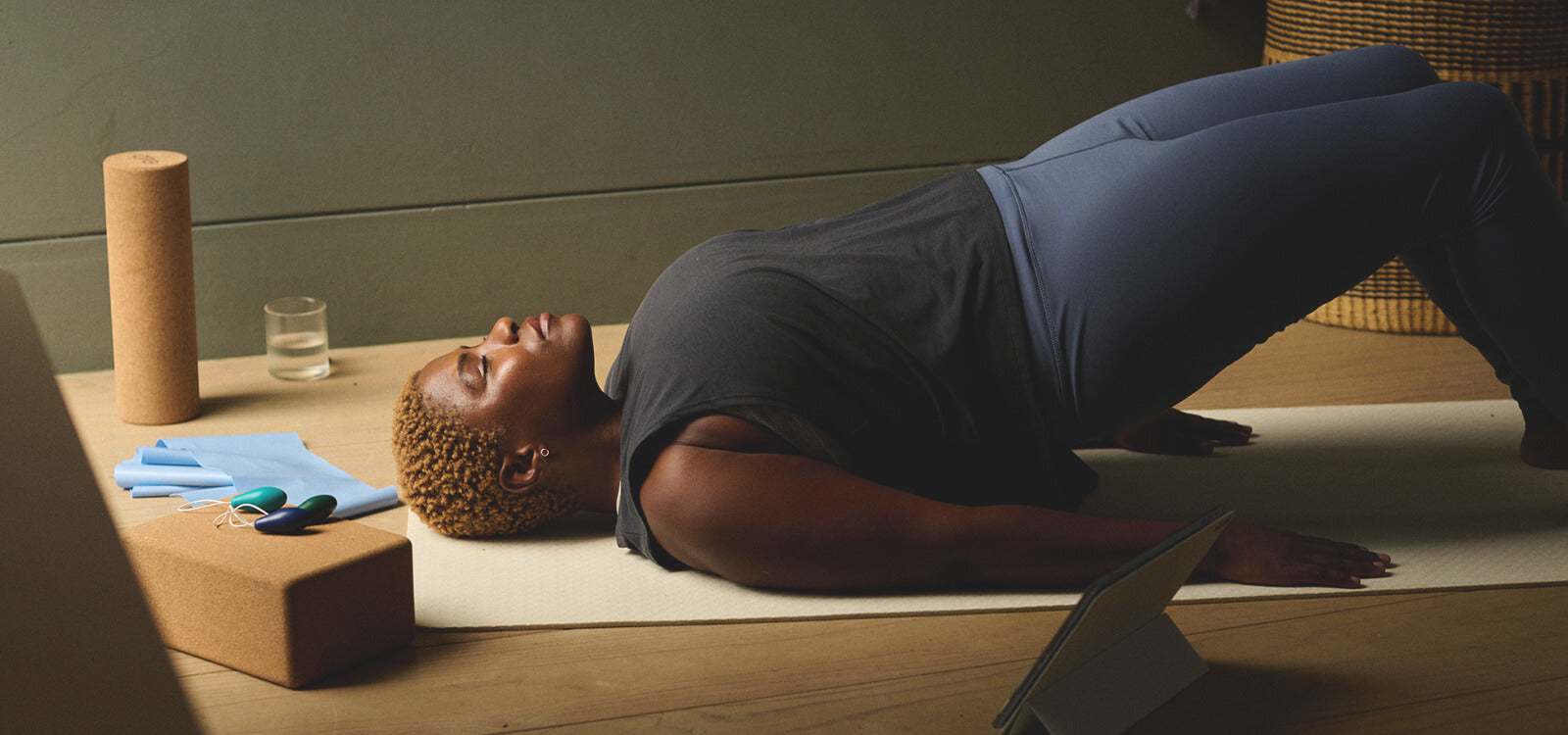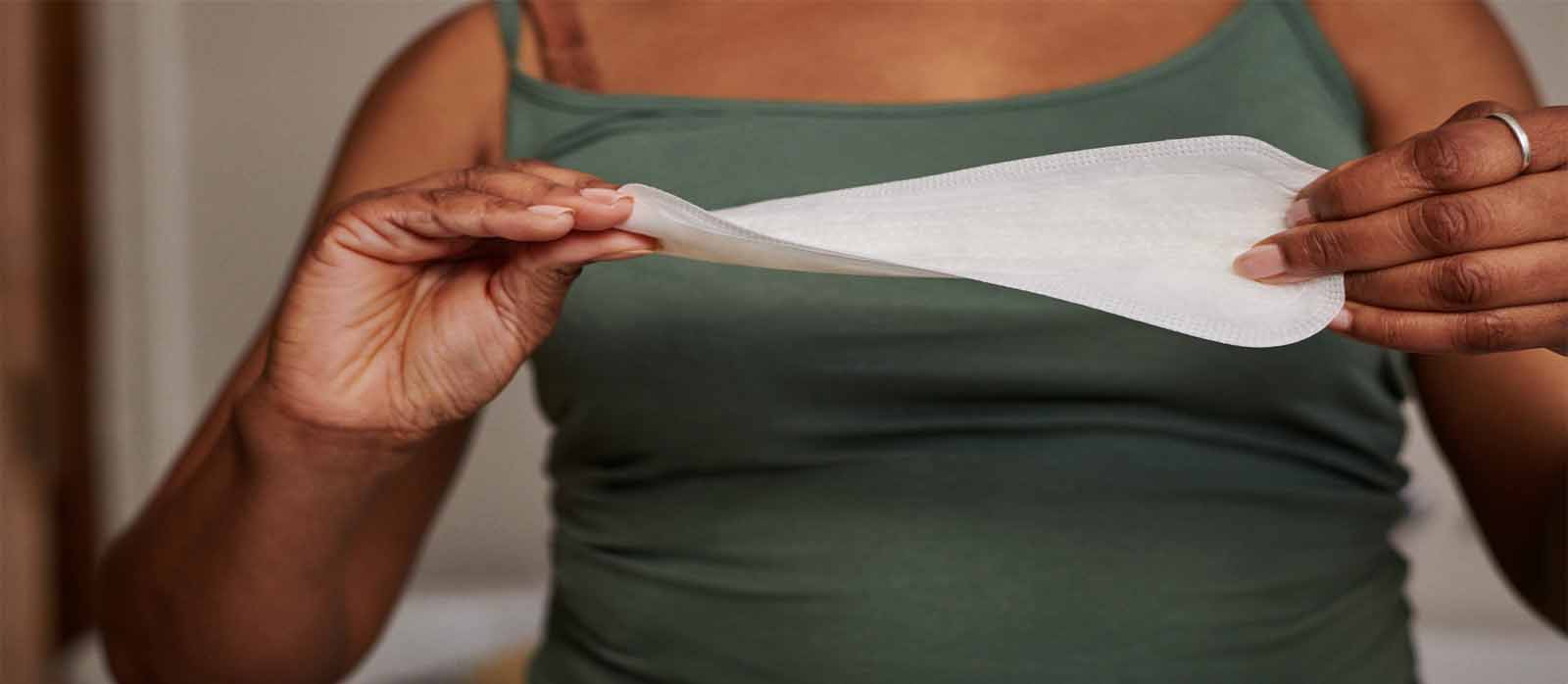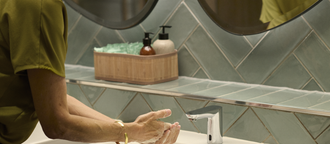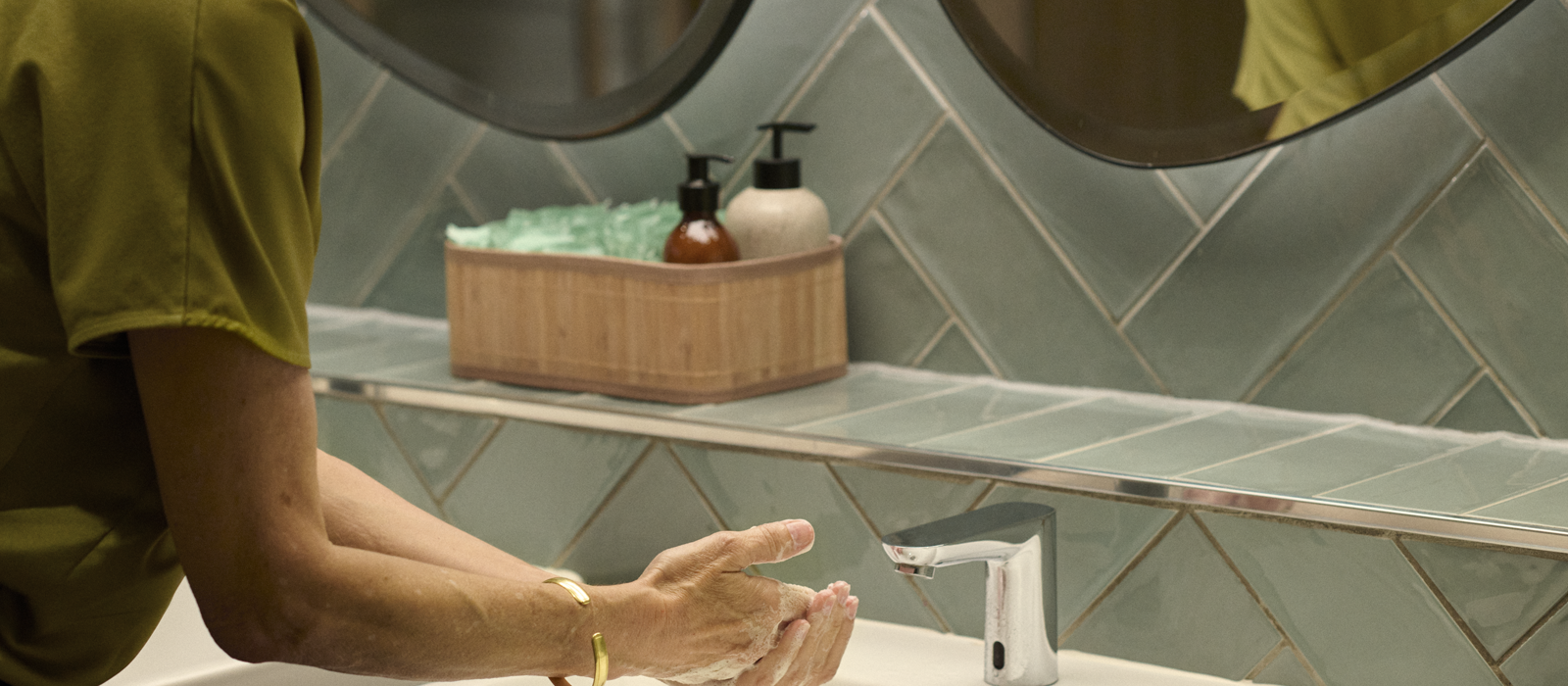Aug 06, 2025
Leaks might feel like something you just have to live with, but they don’t have to be. With the right incontinence pad, comfort and dryness can become your new normal.
To find the best pad for you, it helps to understand the kind of protection your body needs. Below, we break down the different types of incontinence and the pads designed for different needs so you can choose what works best for you.
What Is Incontinence?
Incontinence is when you have trouble controlling your bladder or bowel movements.1 It can happen when the nerves and muscles that control when you release urine or stool are affected by health conditions or other factors, causing leaks.2
While these leaks can make daily tasks more challenging, you're not alone. Millions of adults in the U.S. experience the same thing and support is available.1
Types of Incontinence
There are different types of incontinence, and each one may need a different kind of pad for the right level of support. Let's take a look at them.
Stress Incontinence
Stress incontinence occurs when your pelvic muscles are weak, leading to leaks during daily activities like sneezing, coughing, exercising, and laughing.3
Some common causes of weak pelvic muscles include:3
- Pregnancy
- Childbirth
- Menopause
- Neurological conditions
Urge Incontinence
Urge incontinence happens when you suddenly need to pee and can’t get to the bathroom in time, resulting in leaks.3 Some causes include:3
- Aging
- Menopause
- Health conditions like diabetes
- Certain medications
Bowel Incontinence
Bowel or fecal incontinence is the unintentional loss of stool, whether solid or liquid.1 Some common causes are:1
- Diarrhea
- Health conditions like Inflammatory Bowel Syndrome (IBS)
- Medications like laxatives
Bowel and urinary incontinence often share similar causes, including:2
- Stress
- Diabetes
- Alzheimer's disease
- Infections
- Hemorrhoids
- Childbirth
Double Incontinence
Double incontinence means you experience both bladder and bowel accidents.4 That happens because the two conditions often have the same underlying causes and affect similar muscles and nerves.4
The Role of Incontinence Pads in Managing the Condition
Dealing with leaks daily can be uncomfortable and often frustrating. While managing incontinence, pads are a great way to help you feel confident, comfortable, and protected.
The right product can also help prevent complications like skin irritation, odors, or even skin breakdown and injury to intimate areas.5
So, what are incontinence pads, and how do they work?
What Is an Incontinence Pad?
Incontinence pads are your daily essentials designed to absorb urine or stool. They're made with soft, absorbent materials and leak-proof layers to keep you comfortable and protected throughout the day and night.
Types of Incontinence Pads
- Men’s Incontinence Pads & Guards: These pads are specifically designed for the male anatomy and fit discreetly under clothing. They offer mild to moderate absorbency, making them ideal for managing leaks during daily activities and active routines.
- Incontinence Pads for Women: These pads are specially designed to match the female anatomy. They come in a range of sizes and absorbency levels to provide more targeted protection, whether you're dealing with light dribbles or heavier leaks.
- Nighttime Incontinence Products for Women: They are designed with extra heavy absorbency to keep you dry and comfortable throughout the night.
- Pads for Older Adults and Caregivers: These pads are a great option for caregivers. They have a built-in wetness indicator to alert caregivers, and high absorbency for severe leaks. These features help your loved one stay dry and comfortable throughout the day.
How Do Incontinence Pads Work?
Absorbency Technology
Absorbent products, such as disposable incontinence pads, are usually designed with a blend of soft paper pulp and super-absorbent polymers (SAP) that work together to quickly draw in urine and lock it away.5
Odor Control Features
Many pads include built-in odor control. This is usually achieved through odor-neutralizing materials in the absorbent core. Some also use Zoned Super Absorbent Polymer (SAP)5 or, less commonly, activated charcoal or antimicrobial fabrics.6
Breathable Materials for Comfort
Wearing pads all day can cause sweat to build up, which may lead to skin irritation.7 That’s why it’s important to choose a breathable incontinence pad. These pads use a non-woven, waterproof outer layer to keep you dry and comfortable.7
When to Use an Incontinence Pad
Mild to Severe Incontinence
Incontinence products like liners, pads, male guards, and incontinence underwear are available in a range of absorbency levels to support everything from light drips to heavier leaks. If you're managing bowel incontinence, you may need a more specialized product designed for that purpose.
For those situations, consider using protective underwear designed for light fecal incontinence, heavy-duty pads for moderate fecal incontinence, or adult briefs for severe incontinence.7
Daytime vs Nighttime Use
Nighttime pads have a higher absorbency than daytime pads to catch heavier leaks while you sleep. They’re built for longer wear, helping you have a calm and restful night without worries.
Activity-Specific Use
Your everyday activities may need different levels of protection. For example:
- During a workout: A snugly fit slim incontinence pad with moderate absorbency helps you stay confident.
- During long trips: When traveling with incontinence, a high-absorbency pad with odor control can help you feel more at ease.
- At nighttime: High absorbent and breathable pads designed for extended wear are best for a restful night.
Choosing the Right Incontinence Pad
Size and Fit Considerations
Choosing the right size and fit matters for both comfort and protection. A well-fitted pad can help prevent leaks and odors.5 You can find the right fit for your loved one by using our guide.
Absorbency Levels
Incontinence pads come in different absorbency levels to match your needs:
- Light absorbency: Best for occasional drips or mild bladder leaks.
- Moderate absorbency: Offers protection from frequent leaks throughout the day.
- High absorbency: Designed for heavy leaks, overnight use, or fecal incontinence.
Material Preferences
Incontinence pads come in different types to suit your comfort, budget, and lifestyle:
- Disposable incontinence pads: Single-use pads are available in a range of absorbency levels, from mild to heavy. They’re convenient and easy to use.
- Washable incontinence pads: A budget-friendly option for moderate to heavy leaks. You can wash and reuse them multiple times.
- Cotton incontinence pads: These are soft, washable, and best for light leaks.8
Discreetness and Comfort
To stay comfortable and confident, go for discreet incontinence pads like TENA. These pads are:
- Your right size and fit to prevent bulging or bunching
- Gender-specific to match your anatomy
- Suited for your leak level, so you’re protected without extra bulk
Here’s a guide to learn more about choosing the right incontinence pads.
Benefits of Using Incontinence Pads
Improved Quality of Life
Incontinence pads can improve your quality of life by helping you stay dry, comfortable, and protected from unexpected leaks and odors, allowing you to go about your day with confidence.
Enhanced Confidence and Mobility
Incontinence products don’t just offer physical protection, they also support emotional well-being. By helping you feel secure and in control, they make it easier to stay active in daily life. Whether you’re sleeping, exercising, traveling, or running errands, you can move through your day without the constant worry of leaks.
Hygiene and Health Benefits
Regularly changing your incontinence pads can help maintain good personal hygiene. It also prevents incontinence-related complications like skin irritation, skin breakdown, and injury to your intimate areas.5
How to Use an Incontinence Pad Correctly
Proper Application and Positioning
A well-positioned pad keeps you dry, comfortable, and confident throughout your day. Here are some tips to help you get it right:
- Wear well-fitting underwear to help keep the pad securely in place.
- Remove the adhesive backing before positioning the pad.
- For women, align the pad with the center of the underwear.
- For men, place the pad in the crotch area, ensuring full coverage.
- Press the pad firmly to make sure it adheres properly.
- Always clean and dry the skin between changes to prevent irritation.
Learn more about how to wear male pads and shields.
When to Change the Pad
While everyone’s needs are different, here are common signs it’s time for a fresh pad:
- The pad feels wet or heavy.
- You notice an unpleasant smell.
- You feel itchy, irritated, or uncomfortable in the area.
- You notice small leaks starting to happen.
Read our guides on how often you should change your pads:
Disposal and Hygiene Tips
Maintaining good hygiene during pad changes is important. Here are some helpful tips:
- Caregivers should wear disposable gloves to reduce the risk of contamination.
- If you’re changing your own pad, washing your hands thoroughly before and after is sufficient. However, if you have sensitive skin or prefer extra protection, you may choose to wear gloves.
- If there is solid waste on the pad, empty it into the toilet.
- Roll and fold the pad before placing it in a disposable bag.
- Dispose of the bag properly.
- Wash your hands thoroughly for at least 30 seconds.
Incontinence pads provide a simple and effective way to keep you comfortable and confident throughout the day. With the right product and care routine, you can feel secure all day (and night) long.
References
1. Sandra Gordon. Tips to Manage Incontinence [Internet]. WebMD. 2024. Available from: https://www.webmd.com/urinary-incontinence-oab/everything-managing-incontinence
2. Bladder and Bowel Dysfunction [Internet]. John Hopkins Medicine. 2019. Available from: https://www.hopkinsmedicine.org/health/conditions-and-diseases/bladder-and-bowel-dysfunction
3. Shruthi N, MD. Types of Urinary Incontinence [Internet]. WebMD. 2024. Available from: https://www.webmd.com/urinary-incontinence-oab/types-of-urinary-incontinence
4. Ribeiro DC, Souza JRN, Zatti RA, Dini TR, Moraes JR de, Faria CA. Double incontinence: associated factors and impact on the quality of life of women attended at a health referral service. Revista Brasileira de Geriatria e Gerontologia. 2019;22(6).
5. DeMarinis M, Kaschak TR, Newman DK. Absorbent Products for Incontinence. Clinical Application of Urologic Catheters, Devices and Products. 2017 Dec 10;149–72.
6. Fader M, Murphy CL, Bliss DZ, Buckley BS, Cockerell R, Cottenden AM, et al. Technology for managing incontinence: What are the research priorities? Proceedings of the Institution of Mechanical Engineers Part H, Journal of engineering in medicine. 2024 Mar 19;238(6).
7. Buckley BS. User perspectives, preferences and priorities relating to products for managing bladder and bowel dysfunctions. Proceedings of the Institution of Mechanical Engineers, Part H: Journal of Engineering in Medicine. 2017 Dec 26;233(1):7–18.
8. Mccarthy BJ, Textile Institute (Manchester, England. Textiles for hygiene and infection control. Oxford ; Philadelphia: Woodhead Pub; 2011.
























